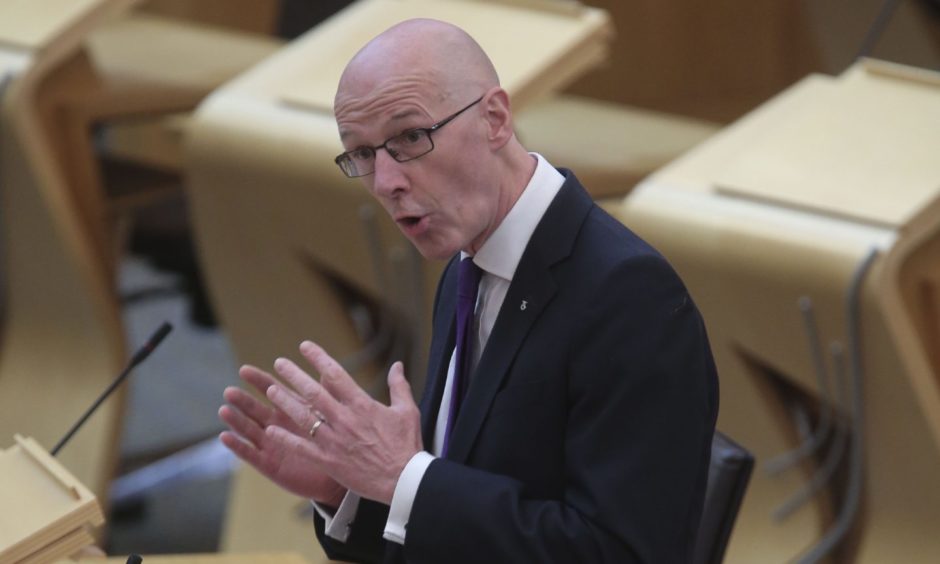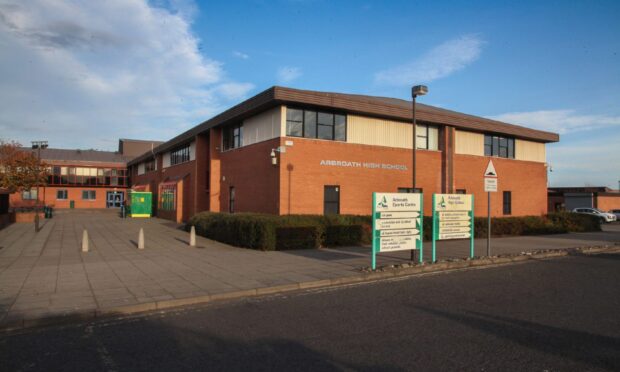The percentage of primary school pupils in Dundee and Fife who are in smaller classes is lower than the national average, new figures have revealed.
Data published by the Scottish Government shows that the percentage of P1-P3 pupils across Dundee and Fife who are in classes of 18 or less was lower than the national average.
The percentage of pupils taught in classes of 18 or fewer across Scotland is 14.0%. Overall teacher numbers are up and class sizes are down.
The figures come from the annual census of pupils and teachers in publicly funded schools in Scotland, which was conducted on 16 September 2020.
Dundee
Scottish Government figures show that since 2016, the percentage of P1-P3 pupils in the city who are in a class of 18 or less has actually increased.
Despite this however, the percentage is still half that of the national average.
In 2014, just 2.8% of P1-P3 pupils were in classes of 18 or less. This is well below the national average of 12.9% that year, and the lowest out of all the local authority areas in Scotland.
This has risen to 7.1% this year, but is still the lower than the national average of 14% and is the lowest out of each of the Tayside local authorities.
Dundee City Council has been approached for comment.
Fife
The figures also show that in the past six years, the percentage of younger pupils in Fife who are in a class of 18 pupils of less has decreased significantly.
In 2014, 22.9% of primary one to three pupils across Fife were in a class of 18 or less. However by September of this year, this had fallen to just 7.1%.
The biggest decrease in this six year period came between 2016 and 2017, when the overall percentage fell from 20.8% to 11.6%.
There has however been an increase in the past 12 months, with the percentage of primary one to three pupils in a class of 18 or less rising from 3.7% in 2019 to 7.1% this year.
Fife Council has been approached for comment.
Tayside picture
Scottish Government data shows that since 2o16 Angus has also seen a decrease in the percentage of primary one to three pupils in a class of 18 or less. Despite this, the proportion remains above the national average.
In 2014 the percentage was 23.1%. This subsequently fell in each of the next three years, dropping to a low of 16.5% in 2017.
However it rose again in 2018, with government figures showing that 20.1% of pupils in primary one to three in Angus were in a class of 18 or less before dropping to 17.7% this year.
In Perth and Kinross, there has been a slight rise in the percentage of primary one to three pupils in a class of 18 or less, going from 15.1% in 2014 to 17.5% this year.
The figures also show that in five of the last seven years, Perth and Kinross has been above the national average when it comes to the percentage of younger pupils in smaller classes.
Teacher to pupil ratio
The data published by the Scottish Government also revealed the pupil to teacher ratios in all of the local authorities across Tayside and in Fife.
The figures show that in since 2014, the pupil-teacher ratio has decreased in both Angus and Fife, falling from 13.3 and 14.0 respectively in 2014 to 12.8 and 13.9 respectively in September this year.
However in Dundee and Perth and Kinross, there has been a slight increase since 2014.
The figures show that in the City of Discovery, the pupil to teacher ratio was 12.9 in 2014. This has since increased to 13.7 in 202o, but is lower than the ratio in 2018 (13.8) and 2019 (13.9).
Similarly in Perth and Kinross, the pupil to teacher ratio in 2014. was 13.3. This has risen slightly to 13.5 this year (compared to 13.6 in 2019).
What are the unions saying?
The EIS General Secretary Larry Flanagan said: “The publication of today’s statistics should provide food for thought for all political parties ahead of next year’s elections as they reveal the lack of substantial investment in reducing class sizes, and in early years they confirm the continued decline in teacher numbers, despite all of the research indicating the critical role of teachers in pre-5 settings (a 30% drop since 2014 from 1200 teachers to 729).”
“The minor variations in the statistics reflect the naturally changing demographic in pupil numbers, with primary numbers falling and secondary increasing, rather than a conscious drive to deliver smaller classes as part of a strategy to close the attainment gap.
“The EIS would call on all political parties to make a manifesto commitment to reduce class sizes in order to make serious headway in delivering more equitable outcomes for all children and young people.”
“Of particular concern is the fact that around 12% of teachers are employed on temporary contracts – this is an unacceptable situation which needs to be addressed and with urgency, particularly in the context of education recovery.”
“It is also glaring that only 2% of teachers are from a minority ethnic background – another damming statistic which needs to be improved.”
Education Secretary John Swinney said: “I welcome this significant rise in teacher numbers, which is the largest annual increase since equivalent statistics began in 2006.
“The Covid-19 pandemic led us to take action to help pupils catch up with learning having been out of school, and we have invested an additional £80 million to recruit more than 1,400 additional teachers and 200 support staff this year – all of whom are now in place.
“A drop in class sizes is also welcome news as it is a crucial element in our ambition to close the attainment gap between the most and least deprived. As we continue to navigate through this pandemic, our focus will steadfastly remain on delivering equity and excellence.”











